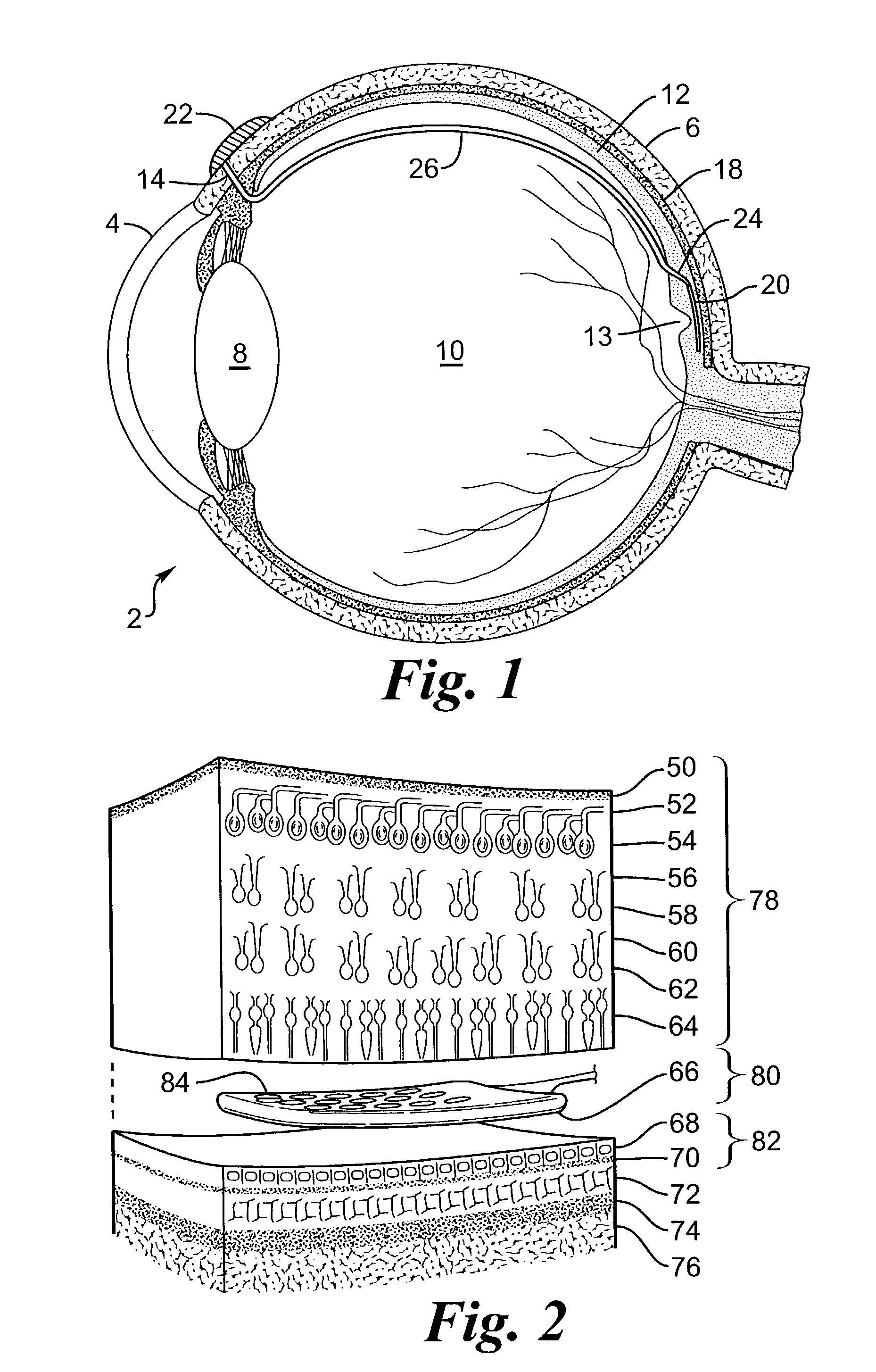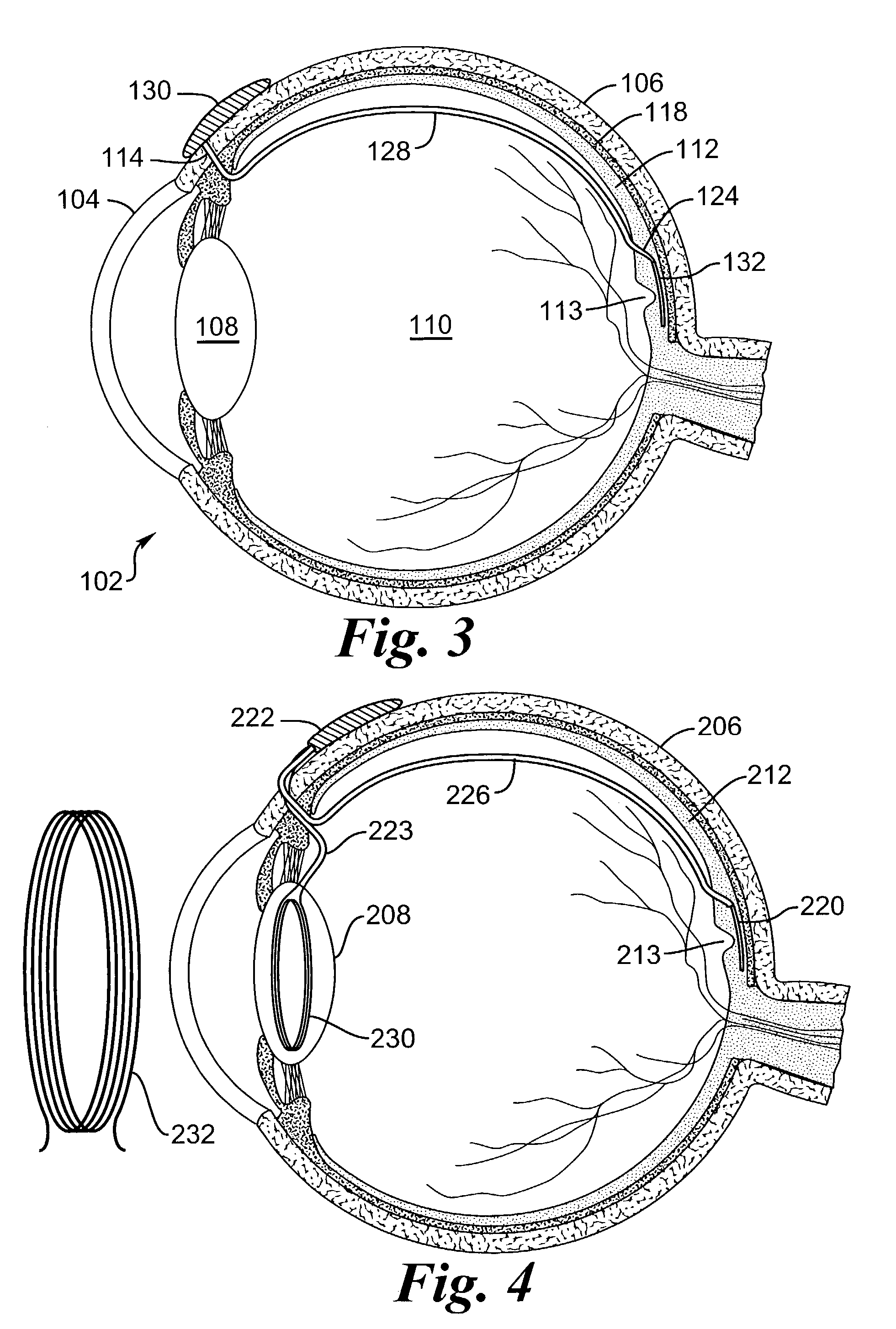Transretinal implant and method of implantation
a technology of retinal implants and medical devices, applied in the field of implantable retinal medical devices, can solve the problems of large size inability to produce adequate simulated vision to truly aid the visually impaired, and large volume of early prosthesis devices
- Summary
- Abstract
- Description
- Claims
- Application Information
AI Technical Summary
Benefits of technology
Problems solved by technology
Method used
Image
Examples
Embodiment Construction
[0050]FIG. 1 provides a cross-sectional view of a preferred embodiment of the eye 2 with a retinal implant 20 placed subretinally. The current invention involves the use of an electronic device, a retinal implant 20 that is capable of mimicking the signals that would be produced by a normal inner retinal photoreceptor layer. When the device is implanted subretinally between the inner and outer retinal layers, it will stimulate the inner layer to provide significantly useful formed vision to a patient whose eye no longer reacts to normal incident light on the retina 12. Patient's having a variety of retinal diseases that cause vision loss or blindness by destruction of the vascular layers of the eye, including the choroid, choriocapillaris, and the outer retinal layers, including Bruch's membrane and retinal pigment epithelium. Loss of these layers is followed by degeneration of the outer portion of the inner retina, beginning with the photoreceptor layer. The inner retina, composed ...
PUM
 Login to View More
Login to View More Abstract
Description
Claims
Application Information
 Login to View More
Login to View More - R&D
- Intellectual Property
- Life Sciences
- Materials
- Tech Scout
- Unparalleled Data Quality
- Higher Quality Content
- 60% Fewer Hallucinations
Browse by: Latest US Patents, China's latest patents, Technical Efficacy Thesaurus, Application Domain, Technology Topic, Popular Technical Reports.
© 2025 PatSnap. All rights reserved.Legal|Privacy policy|Modern Slavery Act Transparency Statement|Sitemap|About US| Contact US: help@patsnap.com



